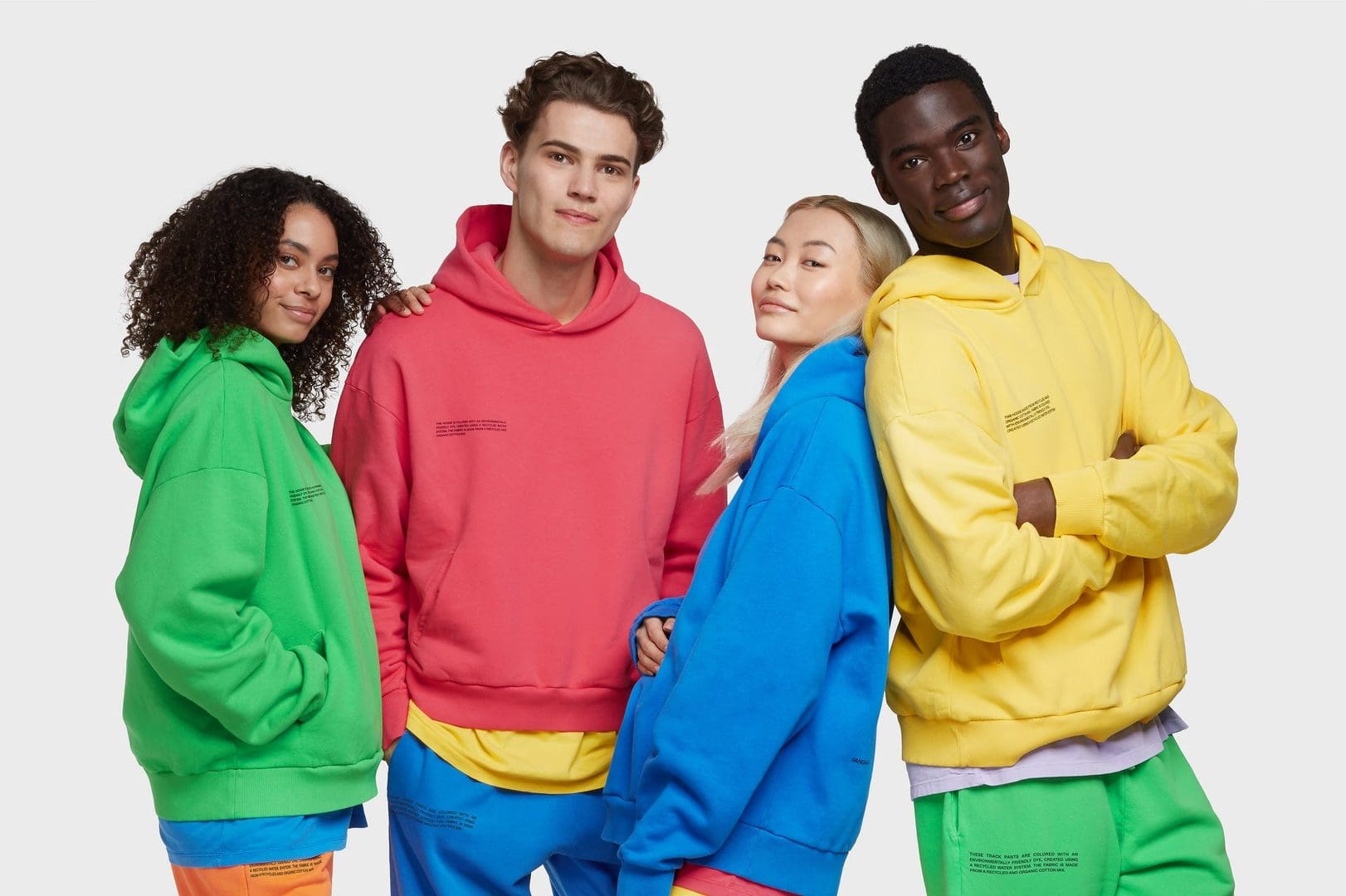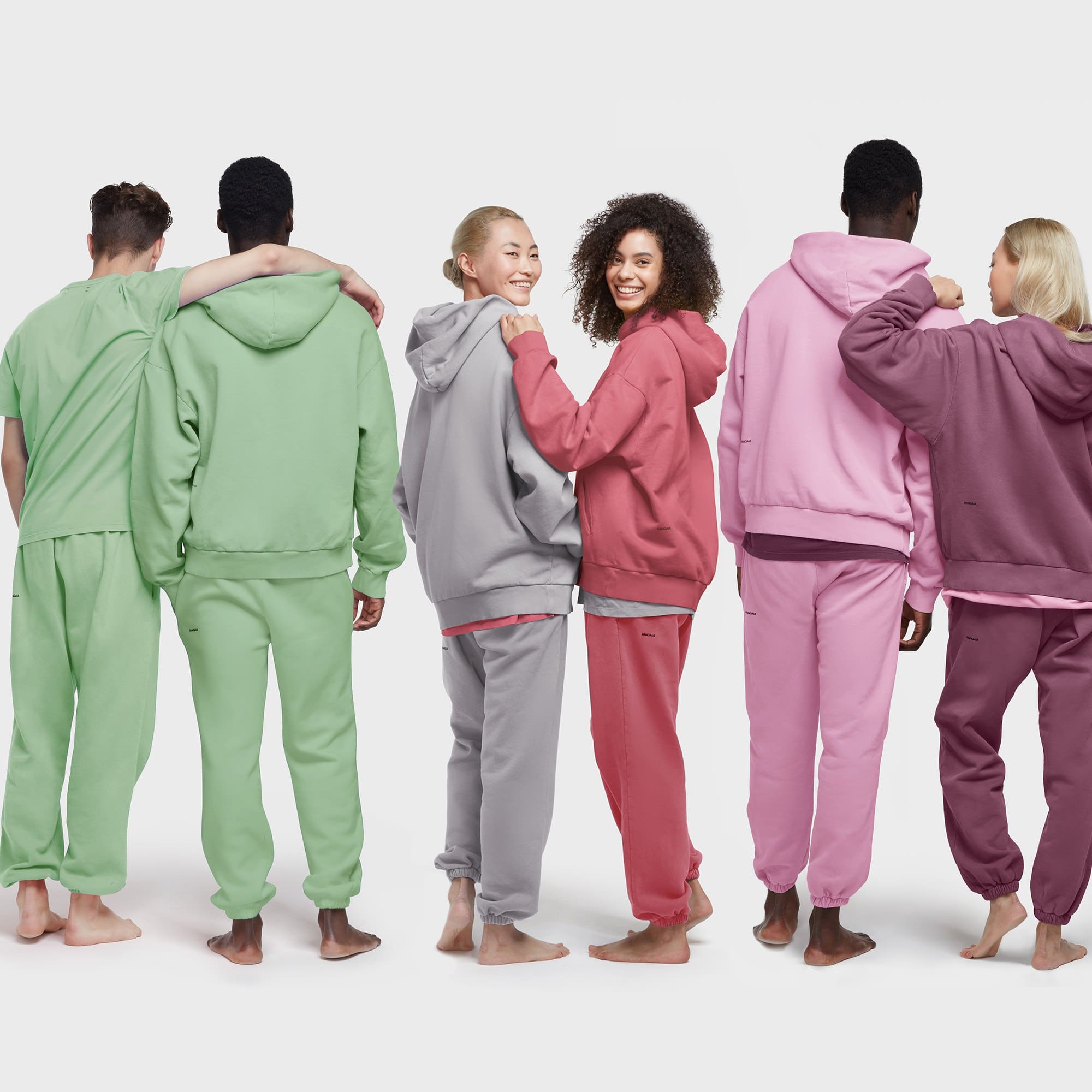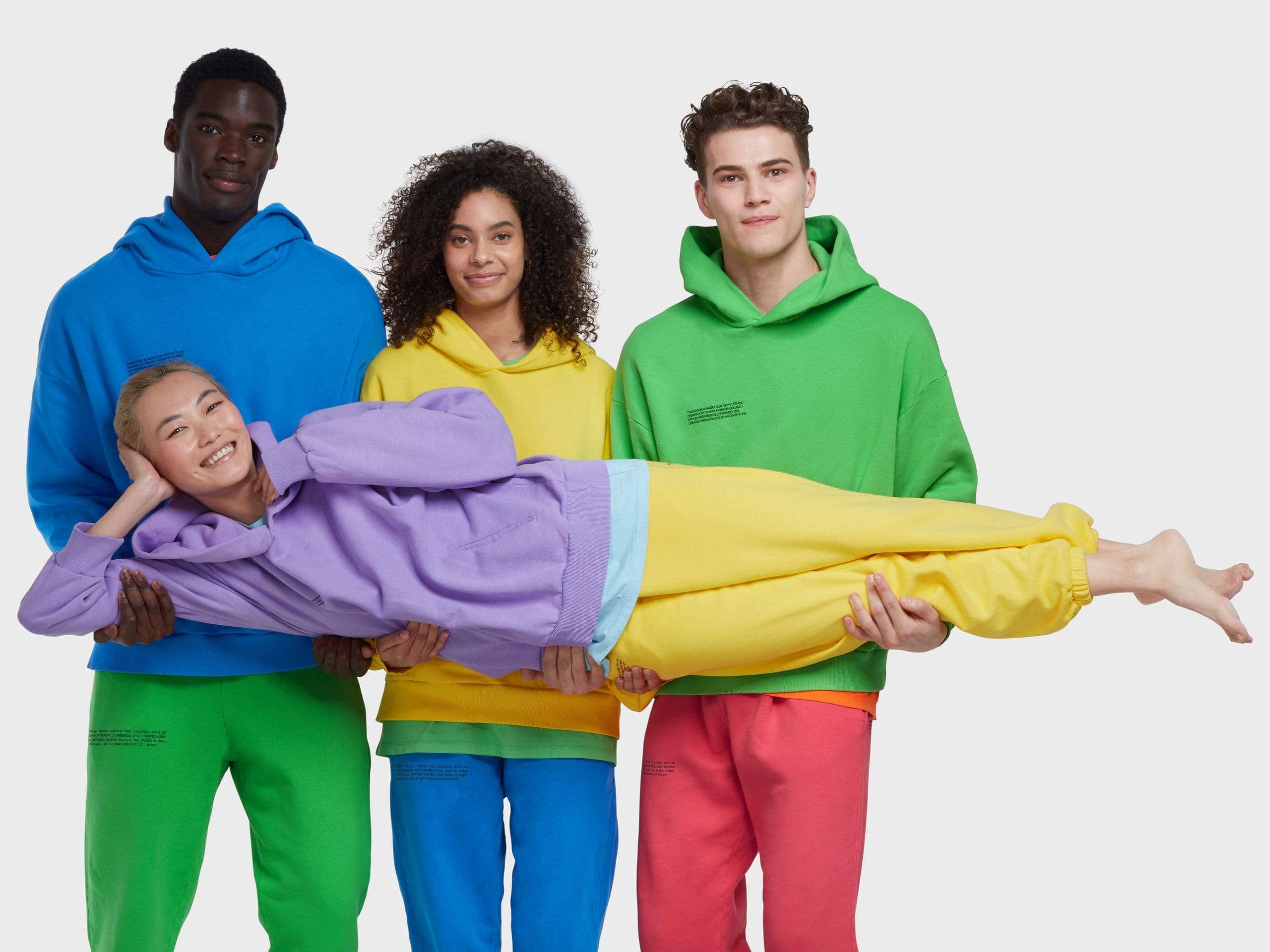Climate change is a crisis that is becoming more and more visible each and every day, and the clothing industry has been named as one of the biggest contributors to this global issue. Pangaia marries the power of being an all-inclusive clothing brand with the responsibility of taking care of Mother Earth. Here, the Pangaia collective shares the background of the Pharrell Williams–backed brand and how modern science can make sustainable innovation the new norm in the clothing industry.
What inspired Pangaia to launch as a brand?
The vision for Pangaia was to create a materials science brand that brings innovations to life through products of everyday use. The objective is to demystify science and showcase breakthroughs in the most accessible way possible. We also wanted to rethink the approach to sustainability completely and have done so by creating a new kind of business model, with the aim to springboard new technologies and push forward their adoption on a global scale. In everything we do, science and material innovation are always our starting points.
We create products for a reason, not for a season. In 2015, the climate crisis reached the point of no return, directly threatening human existence and making it a global geopolitical emergency. Our aim is to help people live sustainable lives and be a force for good on our rapidly changing planet. We strive to drive these solutions further by making technologies and materials available directly to consumers but also to companies across different industries.
We’re also building a new model of leadership that champions the team, as opposed to the individual. We believe in the power of the collective over individuals working alone to make change happen. We’re united by one vision and dream to design a better future, so we’ve organized ourselves into a global group of like-minded individuals with very different backgrounds but driven by the same guiding principles.
Pangaia is a company that connects MIT, Harvard and Stanford alumni with designers, creatives, thinkers and activists from leading design schools from all over the globe to create products that marry cutting-edge science and timeless, beautiful design. As a global collective, our aim is to accelerate the world’s transition to responsible production.
What sets Pangaia apart from other modern brands in the industry?
Through our messaging and values, we hope the brand inspires people to be more conscious in their everyday choices and actions. We want to support our community to consider simple things like using less plastic, not buying synthetics, eating plant-based food, and engaging in systems of the shared economy.
From a technological standpoint, we are really proud of our product palette. We believe it highlights our textile innovations while providing our community with accessible, sustainable alternatives to traditional materials. We pioneer our own breakthrough science and use bio-based fibers as well as materials made from recycled plastic and waste. The launch of FLWRDWN, for example, illustrates Pangaia’s overall brand philosophy of high-tech naturalism, where the future of creating a sustainable fashion industry involves using existing natural materials that are augmented by scientific and technological processes. We are working toward other new innovations in this realm, to bring an entirely new material library into commercial reality.
By introducing new sustainable technologies and practices, our ultimate goal is to show others a way forward so that these innovations become more widespread. The balance lies in bringing our consumers cutting-edge materials at an acceptable price point, knowing that this will eventually build scale and drive down costs across the industry, making sustainable innovation the norm rather than the exception.
How will the sales of the ocean collection directly benefit ecological relief?
We have launched a partnership with an amazing San Francisco–based organization called SeaTrees. For each product sold, we plant one mangrove tree on behalf of the customer. One mangrove tree can store up to a ton of CO2, which is the equivalent of a flight from London to New York City. It’s a joint effort to help reverse climate change and to help restore, plant and protect coastal ecosystems that store CO2 in the most effective way possible. Compared to tropical forests, mangrove forests are five times more effective at storing carbon. We are proud to be supporting SeaTrees in its effort to restore mangrove forests and to be taking our community on this journey with us.




